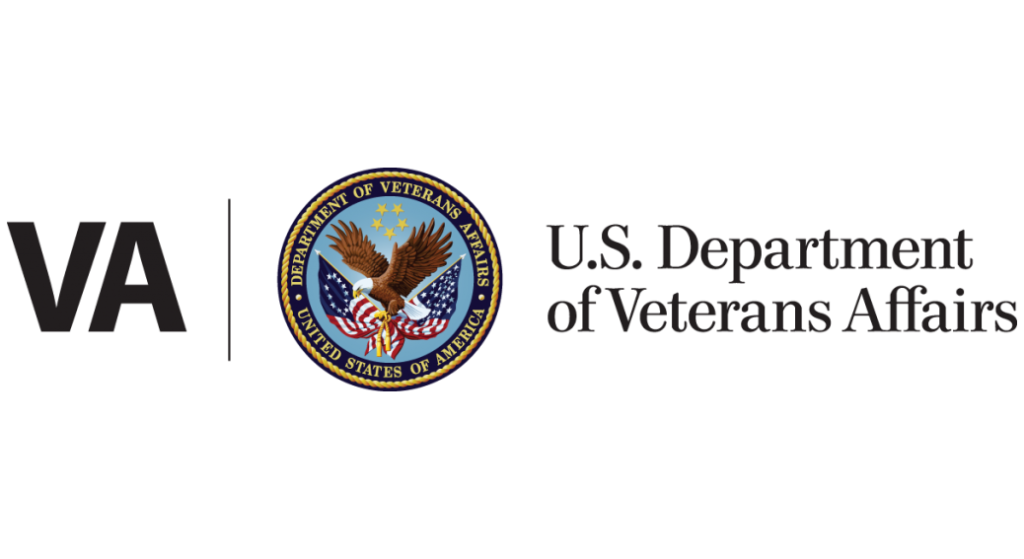Ever felt like you’re fighting a war on two fronts? On one side, the battle against high blood pressure – an unseen enemy that threatens your health. And on the other, a daunting maze of paperwork and bureaucracy as you navigate the VA Disability Rating for Hypertension.
Your fight isn’t just about survival anymore; it’s also about getting recognition from the system designed to support veterans like yourself. It’s enough to increase anyone’s blood pressure!
The good news is: we’ve got your six! This post serves as your strategic blueprint in this fight – whether it be understanding how hypertension is rated by VA or exploring service connections linked with Agent Orange exposure.
We’ll be your guide throughout this journey. We’ll tackle secondary conditions linked with hypertension, explore what goes down during Compensation & Pension exams, and even share handy tips for crafting successful disability claims. Ready? Let’s dive right in!
VA Disability Rating for Hypertension

If you’re a veteran, it’s crucial to understand how the VA rates hypertension. This can impact your health condition, and also determine the level of disability benefits you receive.
Hypertension is common among veterans, with ratings that range from 10% to 60%. What do these ratings signify? They signify different degrees of elevated blood pressure as established by medical documentation, including systolic and diastolic readings.
Diagnostic Code 7101 in Rating Hypertension
The VA uses diagnostic code 7101 when rating hypertension. The process involves analyzing medical records and measuring blood pressure reading on multiple occasions. It’s important to remember that medication used to control hypertension will be considered during this evaluation too.

Key Fact: A veteran receiving a 60% rating could qualify for total disability individual unemployability benefits due to their health issues related directly or indirectly (secondary conditions) with high blood pressure.
Determining Your Rate
To get an accurate va rate, it’s necessary for vets’ service-connected disabilities like heart disease or kidney disease linked with hypertension experience be fully documented in medical records – making them critical pieces of evidence for your claim. For example, if your heart failure is exacerbated by increased stress levels causing higher than normal blood pressures – then we have secondary service-connected implications at play.

Note: Isolated systolic hypertension gets special attention under diagnostic code 7101 category which might increase the chances of getting rated highly.
Remember our buddy Agent Orange from Vietnam War era? Exposure might lead one towards presumptive condition diagnosis leading towards direct connection to hypertension.
In summary, understanding your VA disability rating for hypertension is crucial not only in managing the health condition but also ensuring you receive the maximum benefits due.
Key Takeaway:
Knowing how the VA rates hypertension is vital for veterans. Ratings from 10% to 60% represent different high blood pressure severity levels, assessed through medical records and multiple blood pressure readings (Diagnostic Code 7101). Keep in mind that medication used, secondary conditions linked to hypertension like heart or kidney disease, and even exposure to Agent Orange can affect your rating.
Service Connection for Hypertension
Service connection is the link between your military service and your current health condition – in this case, high blood pressure.
The VA recognizes two types of service connections: direct and secondary. Direct connection means that the illness or injury happened during active duty. Secondary connection refers to conditions that develop as a result of another service-connected disability.
Presumptive Conditions and Agent Orange Exposure

A third type also exists known as “presumptive” conditions. This includes ailments related to exposure to certain substances during military operations such as Agent Orange used during the Vietnam War.
In fact, Agent Orange exposure has recently been linked directly with hypertension making it a presumptive condition for veterans who served in Vietnam-era locations where it was used extensively.
This addition came after significant evidence showed an increased risk of high blood pressure among these veterans which meant they didn’t need further proof of direct or secondary service-connection when applying for VA compensation benefits for their hypertension symptoms.
To claim benefits under this category, one needs sufficient medical evidence showing diagnosis of hypertension and records proving exposure to Agent Orange while on active duty in specified areas recognized by the VA such as parts of Thailand, Korea DMZ or waters offshore from Vietnam just to name few places. Hypertension was added only recently (2023), so many veterans may still be unaware about this provision helping them get their deserved compensation more easily than before.
Secondary Conditions Associated with Hypertension
Just like branches stemming from a tree trunk, these health issues can grow out of your primary condition.

Take sleep apnea, for example. This disorder causes breathing interruptions during sleep and is often linked with hypertension. The strain high blood pressure puts on the heart can worsen sleep apnea symptoms, making it not only a potential consequence but also an aggravating factor.
Hypertension and Kidney Disease

The connection between hypertension and kidney disease is another key point to understand. High blood pressure can damage the kidneys over time leading to chronic kidney disease – it’s like driving on an already damaged road; the more traffic there is (blood flow), the worse it gets.
This relationship makes sense when we consider that our kidneys are responsible for filtering waste products from our bloodstream under normal pressures. When they have to work overtime due to elevated pressures, they may eventually wear down or even fail completely.
PTSD: An Unexpected Secondary Condition?
Anxiety disorders such as Post-Traumatic Stress Disorder (PTSD) also show strong links with hypertension among veterans because of their shared root in stress response systems gone haywire – kind of like how repeated false alarms could cause wear-and-tear in any system.
- Sleep Apnea has been shown as a common secondary condition associated with Hypertension
- Kidney Disease often occurs alongside severe cases of Hypertension
- A significant percentage (69%) of veterans suffering from PTSD also show symptoms of Hypertension

As you can see, hypertension is more than just a standalone health issue. It’s an intricate web that ties into various other conditions, which makes understanding and managing it all the more crucial for our heroes in uniform.
Key Takeaway:
High blood pressure isn’t just a lone health problem for veterans – it’s like the trunk of a tree, sprouting secondary conditions such as sleep apnea and kidney disease. Even anxiety disorders like PTSD show strong links with hypertension. Therefore, understanding this complex web is crucial to managing your health.
Compensation and Pension Exam for Hypertension
The Compensation and Pension (C&P) exam is a key part of the VA disability claim process. It’s an opportunity to make your case, particularly when it comes to hypertension claims.
In these exams. VA professionals take blood pressure readings on multiple days to accurately gauge your condition. This thorough examination can feel overwhelming but knowing what lies ahead helps in preparing yourself better.
Blood Pressure Reading in the C&P Exam

A significant aspect of this evaluation is measuring your systolic and diastolic pressures – numbers that give insight into how hard your heart works to pump blood around the body. An elevated reading might indicate high blood pressure or hypertension.
The VA considers consistent measurements over time more reliable than one-off spikes, which could be due to stress or other temporary factors. That’s why they insist on taking readings across several days during the C&P exam for hypertension claims.
Making Your Case at The C&P Exam
Your task at hand isn’t just showing up – you need strong medical evidence too. Gather any relevant health records that show persistent high blood pressure severity over time because detailed documentation supports your claim significantly.

You also get a chance here to explain how hypertension impacts daily life activities negatively—painting a picture of real-life struggles bolsters credibility.“Show them, don’t just tell them”, as we often advise our veterans at Vet Claim Solutions.
VA Disability Ratings for Hypertension and Sleep Apnea offers more insights on how the VA evaluates conditions like hypertension, which might help you better understand what they’re looking for during these exams.
Your condition affects your daily life. Proper preparation and clear communication can significantly impact the outcome of the C&P exam, making it a pivotal step in securing the compensation you need.
Key Takeaway:
When dealing with the VA disability claim process, it’s key to remember that your Compensation and Pension (C&P) exam is more than just a snapshot of your blood pressure at one point in time. It’s about showing a pattern of consistent high readings over an extended period. So, come prepared with solid medical evidence that clearly illustrates the persistent nature of your hypertension issues and how they affect you every day. This will undoubtedly strengthen your case.
Understanding Hypertension
Hypertension, commonly known as high blood pressure, is a health issue that numerous individuals battle with. It’s not just about numbers on a medical chart; it can have serious impacts on your overall health and well-being.
Systolic and Diastolic Blood Pressure
Understanding hypertension requires knowledge of systolic and diastolic blood pressures. When we talk about blood pressure readings, these two terms pop up frequently.
Systolic pressure refers to the force exerted by your heart when it pumps blood around the body. On the other hand, diastolic pressure measures the resistance to this flow within your arteries between beats. In essence, if either of these figures is consistently too high – you’re dealing with hypertension.

So how do you know if your blood pressure reading indicates hypertension? A normal reading would be less than 120/80 mm Hg. Prehypertension falls between 120-139 for systolic or 80-89 for diastolic readings. Stage one hypertension involves readings from 140-159 (systolic) or 90-99 (diastolic), while stage two begins at levels above those values.
If left uncontrolled, chronic high blood pressure could lead to more severe conditions such as kidney disease or even heart failure – making its management crucial for maintaining good health status. “Know Your Numbers” isn’t just a catchy phrase; it’s an essential mantra for anyone wanting to keep their circulatory system healthy.
VA Disability Rating Process

The VA disability rating process is a key aspect of securing the benefits you’ve earned. It’s crucial to understand how this works, especially if you’re dealing with hypertension.
To start off, when determining your VA disability rating, the VA reviews your medical records. This isn’t just any casual skim-through – they look specifically at veterans already on medication to control their high blood pressure.
Determining Severity and Setting Rates
Your hypertension severity plays a significant role in shaping your final rating. The more severe it is, as reflected by regular blood pressure readings, the higher your potential VA rate for hypertension could be.
The ratings typically range from 0% to 100%, increasing in increments of 10%. But don’t let those numbers scare you. They’re there to reflect how much help we believe you need because of service-connected disabilities like high blood pressure.

Your diastolic pressure is 130 or higher

Your diastolic pressure is 120 to 129

Your diastolic pressure is 110 to 119, or your systolic pressure is 200 or higher

Your diastolic pressure is 100 to 109, or your systolic pressure is 160 to 199
Navigating through Diagnostic Codes
A little-known secret about the process involves something called ‘Diagnostic Codes’. For instance, diagnostic code 7101 pertains specifically to Hypertension. Knowing these codes can give clarity on what exactly affects our decision-making process during an evaluation or review.
This link provides an overview. If all else fails and things get confusing – remember that asking questions doesn’t make you weak.
The Role of the C&P Exam
Ever heard of a Compensation and Pension (C&P) exam? A C&P exam is a key factor in the assessment procedure. The VA may request one for hypertension claims, with readings taken on multiple days to ensure accurate results.

At Vet Claim Solutions, we believe that knowledge is power. Understanding how this system works can only increase your chances at getting the benefits you deserve.
Tips for a Successful VA Disability Claim
Filing a successful disability claim with the Veterans Administration (VA) can seem daunting. Let’s divide it into doable chunks.
Gathering Medical Evidence for Hypertension Claim
The cornerstone of any successful VA disability claim is robust medical evidence. For hypertension claims, you need to provide documentation showing regular high blood pressure readings over time. This helps prove that your condition isn’t temporary or situational.
Your doctor’s notes and diagnosis are key here, but so are records from follow-up visits detailing your treatment plan and its effectiveness. It’s not enough just to have been diagnosed; you need proof that hypertension impacts your life significantly.
Understanding the Necessity of Service Connection
To secure compensation benefits, establishing service connection is critical. This means proving that your hypertension was caused by—or worsened due to—your military service. Remember: direct connections aren’t always necessary if there’s strong evidence linking secondary conditions back to primary ones related directly to service experiences.

In some cases like exposure to Agent Orange during Vietnam War era, certain health issues including hypertension might be recognized as ‘presumptive’ conditions by the VA. This simplifies getting approval on such claims significantly.
Maintaining Consistency in Your Statements
An often overlooked tip is maintaining consistency across all statements given throughout the process—from doctors’ offices through appeals stages—if necessary. Consistency breeds credibility. So, ensure that your accounts about how hypertension affects you remain the same.
In summary, winning a VA disability claim for hypertension requires solid medical evidence, establishing service connection, and consistency in statements. Armed with these tips, you’re now ready to tackle your VA disability claim head-on.
Lifestyle Changes for Managing Hypertension
High blood pressure severity can be managed effectively through some key lifestyle changes. No need to make drastic changes, small adjustments can have a big impact in managing high blood pressure.

Diet and Nutrition for Hypertension Control
Eating well is more than just avoiding fast food; it’s about incorporating foods that help control hypertension into your diet. Consuming fresh produce, veggies, and whole grains can be beneficial for blood pressure regulation as they are abundant in potassium which assists with lowering hypertension. Minimizing salt intake also plays an important role as too much sodium increases blood pressure.

Exercise and Physical Activity for Hypertension Management
Moving around helps regulate heart health and manage high blood pressure. It does not have to be strenuous exercise – even light activities like walking or gardening will do the trick. The aim is consistent physical activity on most days of the week.
Beyond these measures, other lifestyle modifications such as reducing alcohol consumption and quitting smoking contribute significantly towards managing hypertension effectively. Also worth noting: while caffeine has been associated with temporary spikes in blood pressure readings, its link to chronic hypertension remains unclear.

Anxiety Management Can Lower Blood Pressure Severity
Dealing with frequent stress can hike up both your systolic and diastolic pressures. So, learning relaxation techniques could be a big help for you. Practices like yoga or meditation are great ways to find calm in the storm of stressful moments. Let’s not forget about VA Secondary Conditions related to Hypertension too.
FAQs in Relation to Va Disability Rating for Hypertension
1. Is it hard to get VA disability for hypertension?
Getting VA disability for hypertension isn’t always a walk in the park. It requires medical evidence showing a service connection.
2. What is the minimum VA rating for hypertension?
The lowest possible rating by the VA for hypertension is 10%. But, this can climb depending on how severe your condition gets.
3. How do you prove hypertension for VA disability?
To back up your claim, gather and submit comprehensive medical records. These should show high blood pressure readings over time due to military service.
4. Can I claim high blood pressure as a VA claim?
Absolutely. High blood pressure or Hypertension counts as a valid health issue that you can file with the Veterans Affairs office.
Conclusion
Now you’re equipped with a solid understanding of the VA Disability Rating for Hypertension. You’ve explored how VA rates hypertension, underlining the crucial role of diagnostic code 7101.
You know about establishing service connections – be it direct or secondary. Agent Orange exposure during Vietnam War and its link to hypertension is no longer a mystery.
We’ve walked through common conditions often associated as secondary to hypertension like PTSD, sleep apnea, and kidney disease. You are ready for what’s expected in Compensation & Pension exams for your claims.
In essence: you have all the information needed to navigate this process successfully! Remember that collecting comprehensive medical evidence can make or break your claim. Working with VA-accredited representatives could also provide invaluable assistance on this journey!

